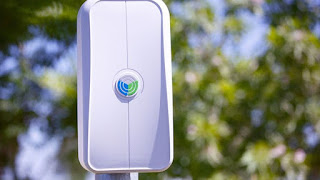Ever since it started closing in on the coveted milestone of 1 billion users (it nowhas more than 1.65 billion), Facebook began to put some serious thought into providing internet access to remote areas of the world. The reasoning is simple: Facebook has already conquered much of the developed world, and now it has to turn to less developed and remote areas to grow, but that won't work if those places don't have net access.
On Wednesday, the company announced a major step in that direction: An open source, wireless platform called OpenCellular.
OpenCellular is a software and a hardware platform that supports a variety of wireless networking standards — 2G, LTE and Wi-Fi included. It's modular, meaning it can be upgraded to support future standards, simple to install and sturdy enough to operate in extreme weather conditions.
On the software side, Facebook will be modifying an existing open source operating system, with the first implementation coming this summer. The system is currently undergoing testing in Facebook's headquarters, and the company is working with partners to make OpenCellular widely available.
"We designed OpenCellular as an open system so anyone — from telecom operators to researchers to entrepreneurs — can build and operate wireless networks in remote places. It's about the size of a shoe box and can support up to 1,500 people from as far as 10 kilometers away," Mark Zuckerberg wrote in a Facebook post.
While probably the most ambitious, OpenCellular is not the only Facebook project that aims to deliver net access. Unveiled this April, a similar project calledTerragraph brings high-speed connectivity to urban areas via the fast WiGig standard. Project Aries, also announced in April, is a platform that efficiently uses the radio spectrum; essentially a followup to 4G technologies which are in use today. Finally, Facebook's solar-powered drone Aquila will bring net access to remote areas.

No comments:
Post a Comment